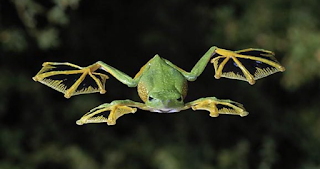Before humans went into space animals were used to test equipment. The first animal to be sent up in a rocket -however not into space - was Albert 1, a male Macaca Mulatta monkey. He was launched in a US Air force reborn German V2 rocket in 1948. He and his successor, Albert 2, died during the tests.
However, on 20 September 1951, a monkey and 11 mice were recovered after a launch in a US Aerobee rocket. Several animal experiments were carried out before the first manned space flight to test the consequences of radiation and weightlessness on living bodies.
Space dogs, and a cat
 |
| Laika |
Laika, a feminine Samoyed husky, became the first animal in orbit after being launched by Union of Soviet Socialist Republics in Sputnik 2 on 3 Gregorian calendar month 1957. There was no way to bring her down and she died after 10 days in space. More dogs were launched in tests before human cosmonauts went into orbit. Two feminine Samoyed huskies, Belka and Strelka, orbited successfully on 19 August 1960. Strelka later gave birth to 6 puppies, one of which was given to American President John F. Kennedy. On 18 October 1963, a French Veronique AGI rocket launched a cat called Felix into space and returned him safely to Earth by parachute.
Monkey business
 |
| Baker |
Able, a feminine Macaca mulatta monkey, and Baker, a female platyrrhine (squirrel monkey), were launched by the USA on 28 MAy 1959. They failed to orbit and successfully returned to Earth. On 29 Gregorian calendar month 1961 Enos, a male chimpanzee, completed two orbits and survived. Many other chimpanzees and Monkeys have since orbited. The USSR's first space primates were monkeys Abrek and Bion, who orbited on 14 December 1983 in one of a series of Bion satellite experiments, which also carried tortoises, rats, insects, fish, newts, and frogs.
Flying Frogs
On 9 November 1970, the USA's orbiting frog Otolith satellite (OFO-A) launched two bullfrogs into orbit for a week. Between 2 and 10 December 1990, Toyohiro Akiyama, a Japanese journalist, took six green tree frogs to the Soviet Mir space station to conduct weightlessness experiments.
Worldwide web
 |
| Arabella |
Arabella, an orb-weaving garden spider, arrived at the US Skylab-3 on 28 July 1973. She spent almost 60 days in orbit in an experiment to test the effect of weightlessness on her web-weaving skills.
A space menagerie
The STS-90 mission of space shuttle Columbia (17 April to 3 MAy 1998) contained the Neurolab - a space menagerie with 170 baby rats, 18 mice, 229 swordtail fish, 135 snails, 4 oyster toadfish and 1,514 cricket eggs and larvae.
Can of worms
On 1 February 2003, a space shuttle Columbia STS-107 broke up on re-entry and its crew of seven astronauts was killed. On-board animal experiments involving silkworms, spiders, carpenter bees, harvester ants and Japanese killifish were destroyed, but, amazingly, canisters of worms were recovered alive.



No comments:
Post a Comment